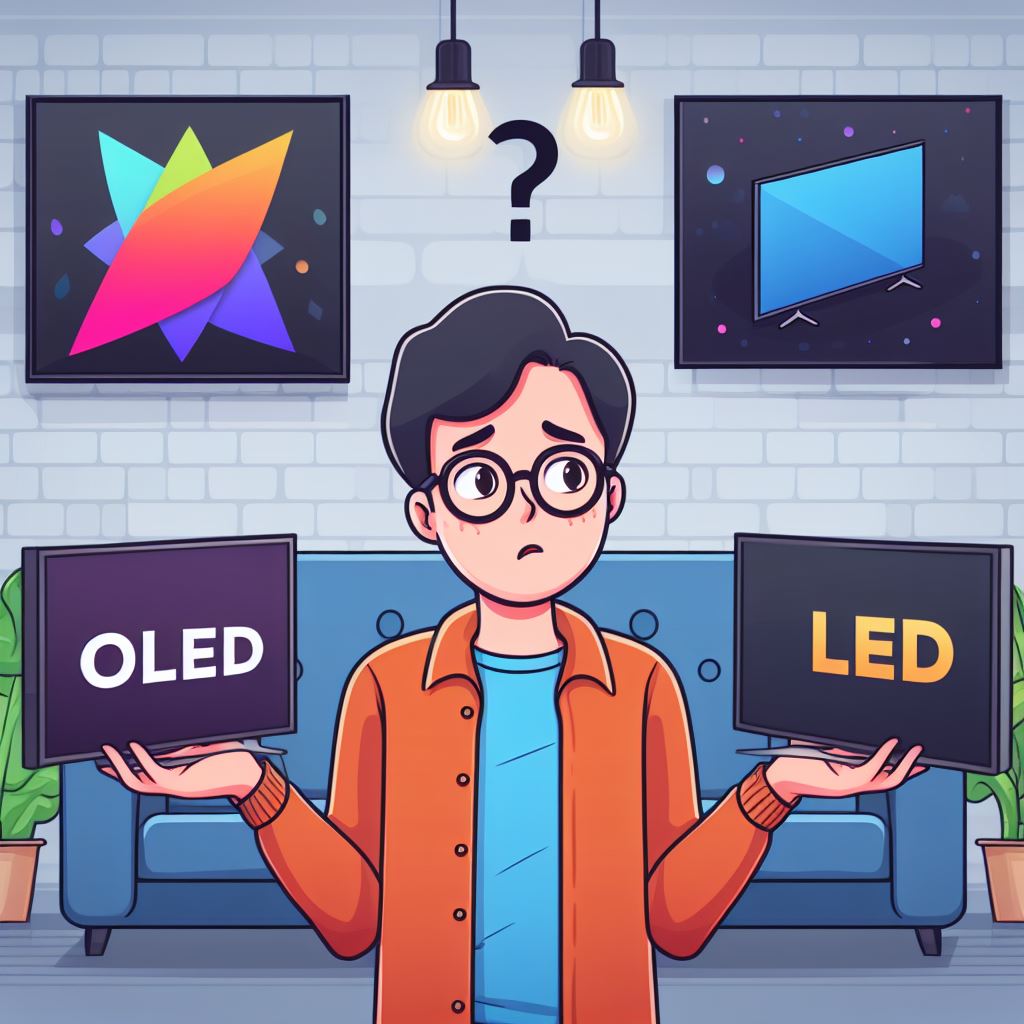I was recently in the market for a new TV and realized that the space is overrun with marketing buzzwords and salespeople who use jargon to confuse customers and promote their older stock or higher-commission units. So, I decided to guide you, on how to buy the best TV in 2024.
The Basics
- Select Your Size: TV sizes are usually measured in inches, and right now, a 55-inch TV is pretty standard minimum size to consider. Go up to 65, 75 or 85 depending on the setup of your living room. That’s unless you have a specific need like using it for PC gaming, which might require a smaller screen if you sit close
- Resolution: Straightforward. For 55, 65, and 75-inch TVs, aim for a minimum of 4K. If you’re eyeing a 75-inch or larger TV, you might consider 8K. However, keep in mind that native 8K content is still scarce, and you’ll depend on the TV’s upscaling capabilities for most content. And in several tests in typical living rooms, viewers can’t really tell the difference yet
The Technologies
OLED, QLED, ULED, QD-OLED, Crystal UHD, Full HD, NanoCell, QNED, Full-Array, Mini LED
Most of these these terms are essentially marketing jargon for the same basic set of technologies underneath – OLED, Mini-LED or LED

OLEDs do not have a separate backlight. This means that every single pixel on the screen is self-lit and can be individually turned on or off. Which translates to perfect blacks and a theoretically infinite contrast ratio as the black levels are near zero.
Compared to this in traditional LED/LCD TVs cannot dim individual pixels, but only zones or groups of pixels. This is typically marketed as the number of dimming zones for a LED TV, and typically higher is better.

The more number of LEDs which can be individually controlled, the better the image quality. So for a starter TV such as the Samsung CU7000 which lists for $379, the backlighting is from the edge as shown on the right, so there is no local dimming and hence no dimming zones. But a mini-LED TV such as the 55″Hisense 55U8K has 672 dimming zones with a full-array backlight as shown on the left leading to a vastly superior image quality
What does this mean?
The Cream of the Crop: OLED
- If you’re going for the best TV display technology without budget considerations? – OLED
- Top brands and models
- Sony – XR-A95L
- LG – G3
- Samsung – S95C
- Top brands and models
- It is a steep difference, but if you actually go to a showroom and compare – the quality difference becomes apparent. No standard LED TV no matter the marketing jargon holds a candle to OLED in terms of image quality. Yes it costs 5x higher, but the difference in image quality is worth it if you can afford it
Mini-LED: A Worthy Contender
- If OLEDs have everything, why consider anything else? Well the difference is quite obvious when compared to a LED, but you may notice another category of TVs where the difference isn’t that big. Mini LEDs. OLEDs have two minor drawbacks – they aren’t the brightest and are best used in a dark room. Also there is a minor risk of burn-in, if some image is left for a long duration on the screen
- This is where mini-LED TVs enter. With a comparable image quality, the lower price point suddenly seems like a good bargain. Also mini-LED TVs are significantly brighter, which means in a bright room with sunlight, the images will pop much better than an OLED
- For the earlier comparison, if you bring in mini-LED TV options for comparison, you get some nice budget options
- Hisense U8H 55” – $699!
- TCL QM8 65″ – $900
- Samsung QN90C 55” – $900
- So mini-LEDs provide a reasonable middle-ground between the high-end OLEDs and the basic LED models. The image quality is comparable to OLEDs, they’re significantly brighter and more suited to brighter rooms and most importantly are almost half the price at any size!
- Always remember to get the latest models 2023/2024 for any model you select, as usually the SoC powering the TV gets significant upgrades with each year directly translating to newer features and better image processing overall
- Brands You Can Trust – The challenger brands such as Hisense and TCL are full of checkbox features, but their long-term reliability remains to be seen. If you have the budget stay with Sony, LG or Samsung
The Final Checklist to buy the best TV
- Resolution should be 4K, but what size with a minimum of 55” is ideal for your living room?
- LED, Mini-LED or OLED technology depending on your budget. If technology differences are confusing, go to a showroom and get a feel on whether the improvement in image quality is worth the extra money
Keep It Current
- Ensure the latest generation of the same model – not worth compromising for a 2022 model for minor discount. Also ensures that the latest improvements in connectivity such as HDMI 2.1 which can carry 48Gbps are standard compared to HDMI 2.0 which can only carry 18Gbps which becomes meaningful when connecting the latest generation of gaming consoles such as the PS5 which can output 120Hz at 4K which isn’t possible on a HDMI 2.0 port
- And within comparable models
- Choose reliability, prefer the bigger brands over the challenger ones
- Feature-set: Should be the last consideration, things such as Dolby Vision are more gimmicky and doesn’t add much to the experience
